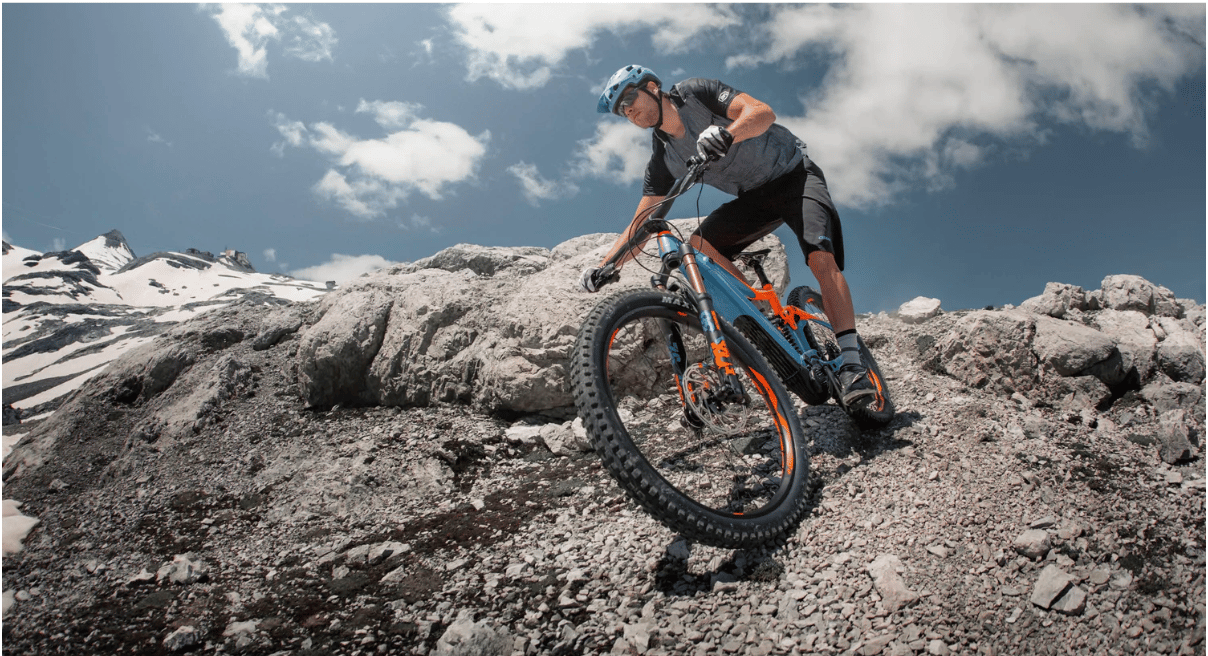Many people will say “it’s as easy as riding a bike” and think that riding a bike is easy, which it is but there is a lot more to riding than catches one’s eye.
Most people have known how to ride a bike since they were children however just because you know how to stay upright whilst cycling and pedal forward certainly doesn’t make you an expert. Although these few skills won’t necessarily make you an expert, they will definitely help you become a more complete cyclist and make you feel more confident on your bike.
Some of the skills that will be listed below may be very easy for you to learn and a few may be hard but do not give up. Getting each of these skills right wild definitely takes time if you’ve never tried them before but practice makes perfect and with time and patience you will get it right.
Braking
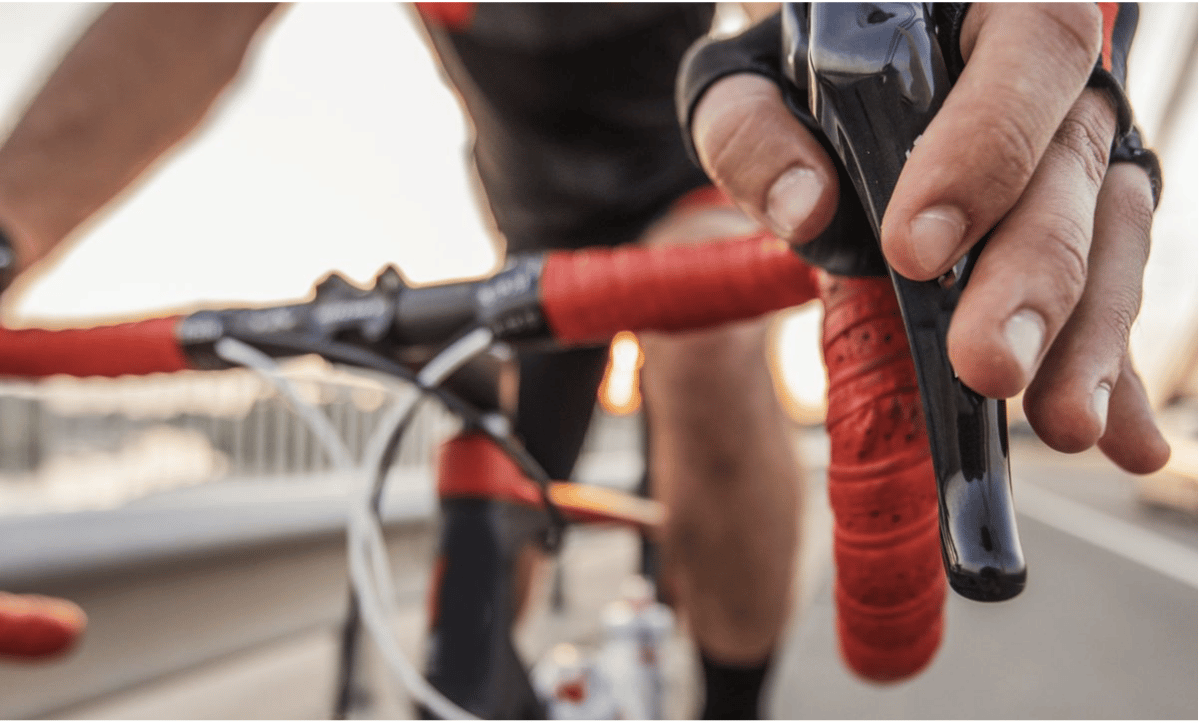
This is definitely a skill that many people have probably practised a lot when learning to cycle. Braking definitely seems like an extremely easy skill to learn as you brake by just pulling on the levers but there is actually more to it. Once you understand exactly how the brakes work and how you can use them to your advantage you’ll become a lot more confident when you’re carrying a lot of speed, cornering or riding with others.
Although most people were taught not to touch the front brake it is actually a lot more powerful than the rear and is the real stopping brake. The rear brake is definitely still a good option for braking and will get the job done but it has to be applied gradually. Are looking for more effective stopping power then you will need to use the front brake but before you do so you will need to make sure to rearrange your body to the rear of the bike so that there isn’t a possibility of you going head first over your handlebars when the front brake pressure is applied.
Look ahead
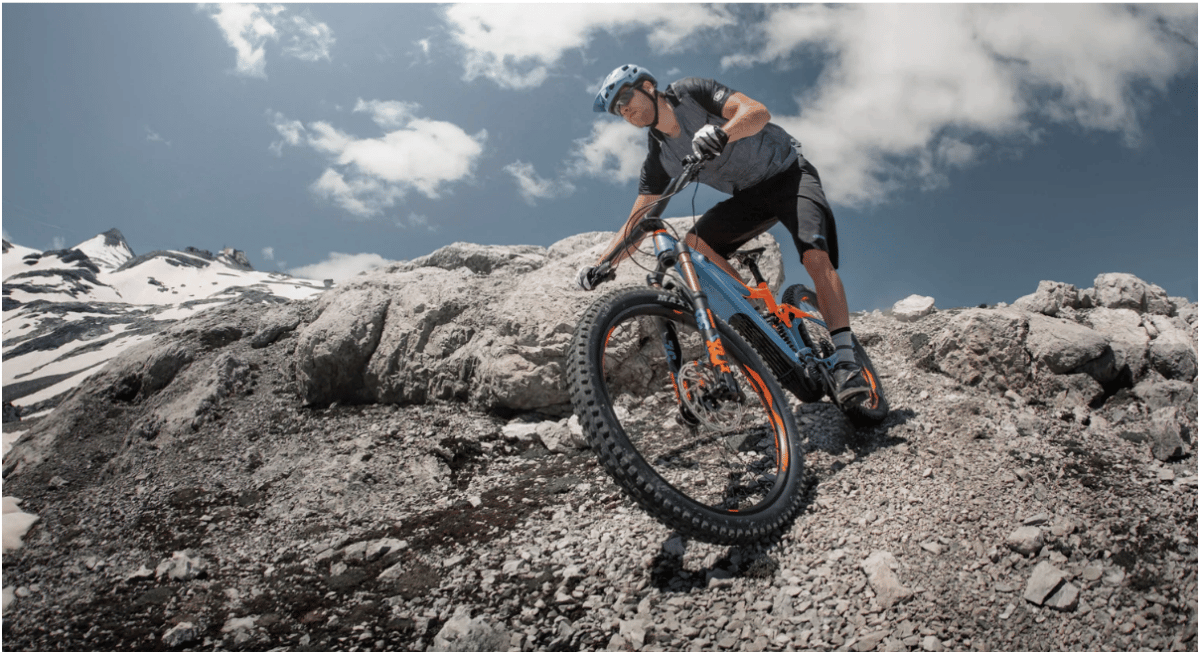
Looking or observing the track or road ahead of you will help a lot when it comes to your cornering especially. When you are looking ahead you should be trying to notice if there are any types of obstacles or things that could potentially cause danger to you, such as potholes, loose surfaces or even other bikers. The more you observe other riders in front of you the better you will be at predicting what they’ll do or learning what you will have to do in order to pass them or make way for them. Once you’ve learned how to analyse the road in front of you and adjust your riding lines you’ll make the rides a lot more effective and safer.
When you’re descending down a hill or mountain then this skill becomes vital and it’ll even be more important for you to be able to look even further ahead as you are travelling at a faster speed than you would in the city or on a flat surface. This will also help you to see what type of turns or corners are coming up so that you can adjust your speed or position accordingly. Like if you suddenly see that there are trees below that seem to cut across the trail that you are on then it means that there should be a tight corner incoming.
Cornering

Cornering is the one spot where many inexperienced riders lose a lot of time as they over brake when they are coming into the corner. Just like looking forward whilst you’re riding straight it is also important to remember to look through the corner when you are taking it, which can definitely be a little hard in the beginning. This is crucial because your bike will generally follow your eyesight and will in turn make taking that corner a lot easier. Then once you have gotten a hang of looking through the turn it is also important for you to have most of your weight on the outside leg, this will help you with traction control, as well as your inside arm, which helps control the direction of your bike as you may need to make the turn tighter by applying more pressure onto that arm.
Then it is also important to be safe whilst you’re riding in groups and to do so it is a good start to try and allow a little more distance from the person in front of you when you are cornering. This can be important as it will give you more reaction time to avoid an obstacle that you don’t see or even to avoid the rider in front of you if they were to do something wrong themselves.
To increase your speed going into the turn you can just use your rear brake and then lean into the corner so that more of your momentum will be carried through. It is also important to be aware of what sort of surface you are riding on because if it is more slippery, like when it is wet or the surface is looser, then you will need to keep more upright and keep your centre of gravity closer to the middle in order to try and avoid sliding and maybe falling.
Out of saddle riding
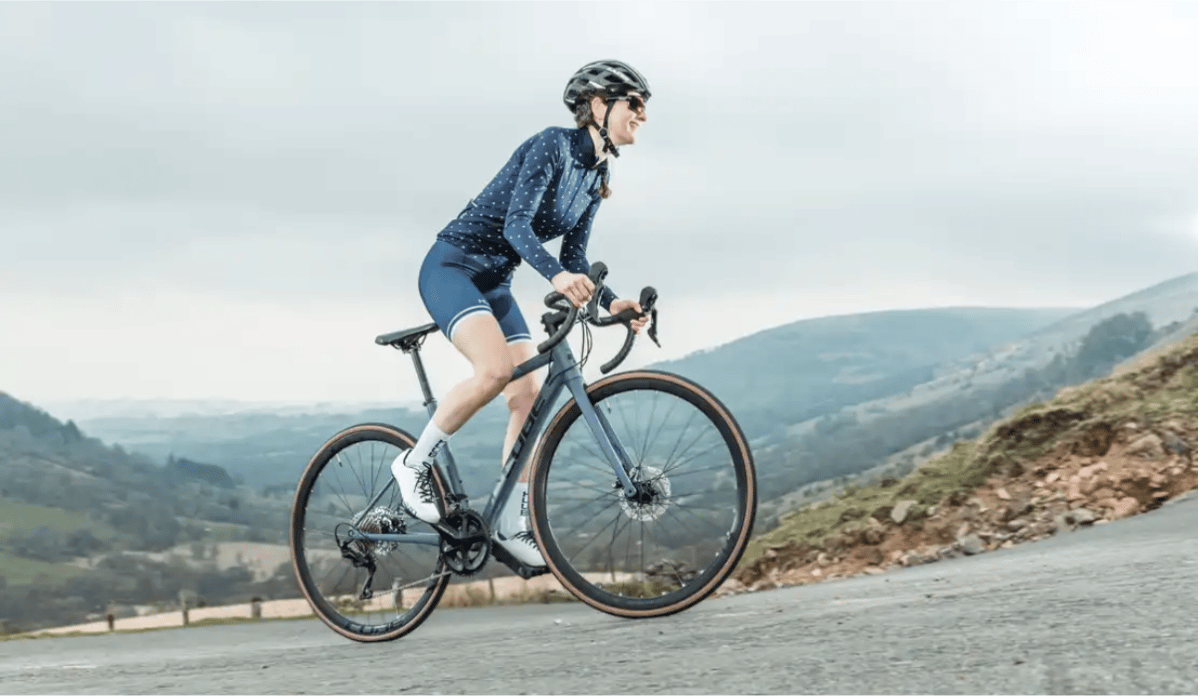
Even if you are a rider who doesn’t like climbing it is quite hard to avoid it and so why not improve your skills in order to make it as easy as you can. When you master the skill of riding out of your saddle it will greatly help you increase your power when climbing or even sprinting to gain speed on a flat surface or descent. This extra power is achieved because you are using all the weight of your body and not just the power from your legs to drive the pedals of the bike. Before you approach the section where you’ll be out of your saddle riding it is important for you to be in a high gear so that you don’t accidentally spin your wheels from being in a gear that is too easy.
All you’ll have to do is make sure that your hands are firm on the handlebars of your bike and lift yourself up and out of the saddle. Then once you feel comfortable with just being out of the saddle you can use your arms to move the pick from side to side in order to help you gain more momentum easier.
When you are in this position and riding out of your saddle you will definitely notice that you get more power but you will also notice a drop in efficiency compared to if you stayed in your seat instead. If the hill is a little bit longer than you’d like or you want to save energy then it is a much better idea for you to be in an easier gear and stay seated than stand up and battle your way up a hill in a high gear. You should also be mindful of the surface that you’ll be riding out of the saddle on because if it is loose or wet then it may be better to stay seated in order to keep your centre of gravity closer to the rear of the bike to prevent any sort of slippage or spinning of the back wheel.
Cycling with others
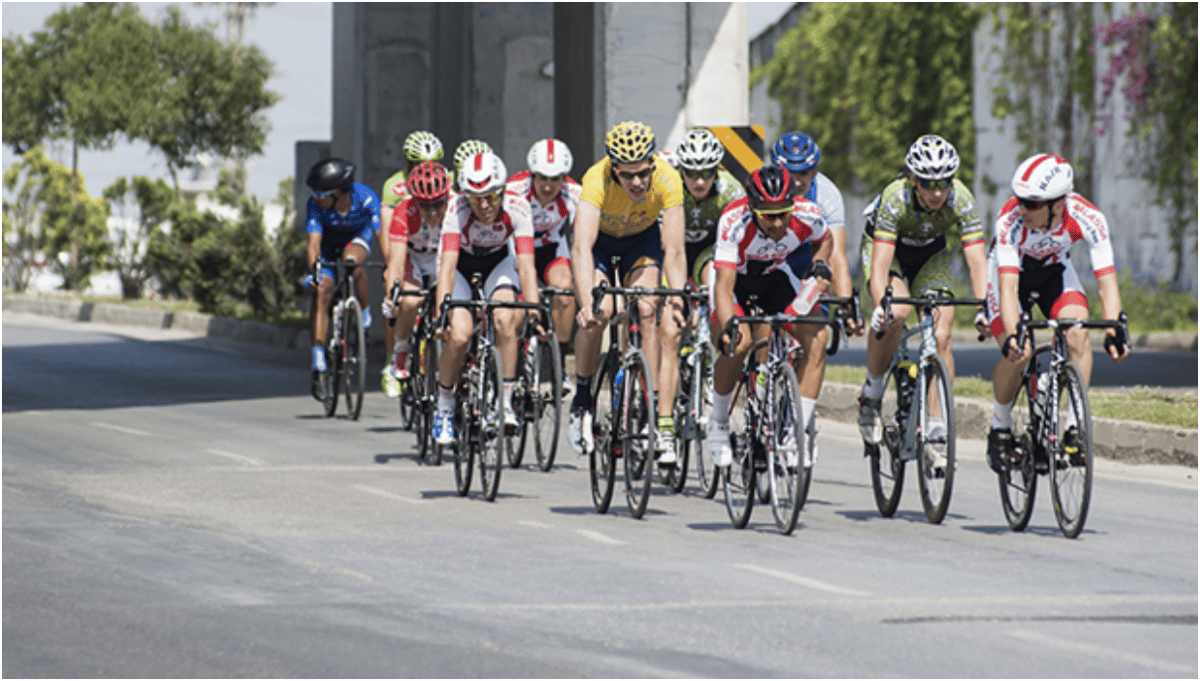
When you cycle with another person or in a group it not only adds loads of social benefits to your cycling but also allows you to ride even further. To start using this to your advantage try and ride in a group of people who you know like your friends and when you get more comfortable riding with people around you then start to ride closer to each other. You’ll notice how the rider in front of you will break the air or wind resistance for you and actually make the cycling much easier for you. Once you feel comfortable you can even incorporate hand signa;s and other group cycling etiquette into your cycling to make it more efficient and safer.
Staying hydrated
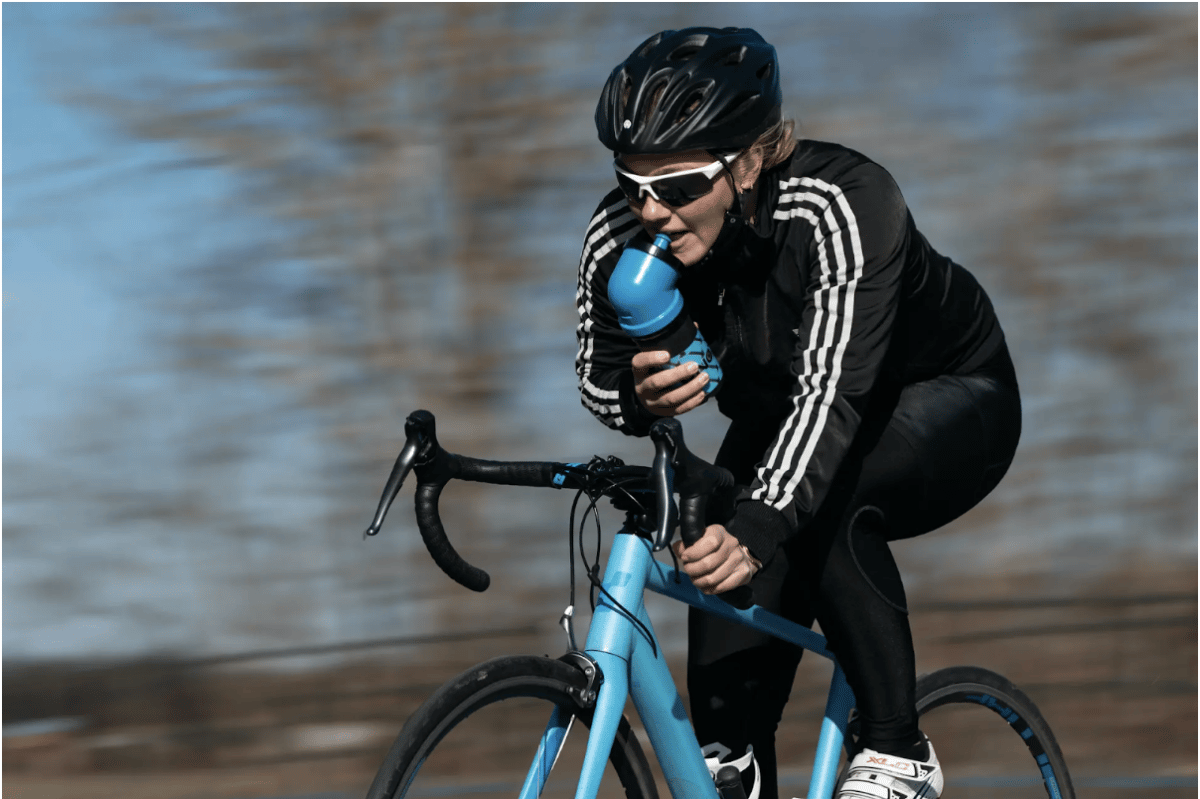
The ability to cycle with one hand on the handle bars is a very valuable skill to learn for any biker as it allows you to do what you want with your free hand. One of the most important things that you will need to use your free hand for is drinking on the go as well as giving hand signals to other riders or traffic, if you’re out on the roads. Cycling with one hand is a lot easier to do when you are going a bit faster, so try and find an open, quiet piece of road to practise taking your hand off on. In the beginning just try and take your hand off for short intervals at a time before you feel confident to take it off for longer.
Then once you’re comfortable with taking your hand off from the handlebars you should start trying to reach for your water bottle on your bike whilst keeping your eyes on the road ahead. Then once you’ve been able to locate your bottle try and remove it and bring it up to you to drink. Being able to remove and put back your water bottle whilst keeping your eyes on the road will even help you with a lot of the other skills that can also improve your riding experience.
Eating while riding

Just like drinking and staying hydrated, eating is extremely important in order to increase the length of your rides. When you are riding it is important to keep your energy levels at optimal levels in order to keep maximum efficiency throughout your ride. Due to weather and other factors it can be very hard to open up your food wrapper whilst you’re cycling.
Thankfully there is a simple solution to this and that is energy gels and other products that work similarly. These products have openings that can very easily be torn open with just your teeth so that you can do it with no problem whilst you’re riding. If you know how to drink while you’re riding then you can just use the same technique you’d use for your drink for your food. If not then you can do the same as learning to drink and just practise on an empty road at first before you are comfortable with it. If you aren’t into having man made snacks in your body and prefer to fuel up with natural snacks then a banana is the perfect option as it gives you great energy and can be opened easily with one hand and your teeth.
To open and eat an energy bar all you’ll have to do is take it out of your pocket or bag with one of your hands and smack it against your handlebars, which should cause the bar to come out of its wrapper with no problem. Then once you have opened it it should be pretty straightforward to eat it while you continue cycling.
Changing clothes
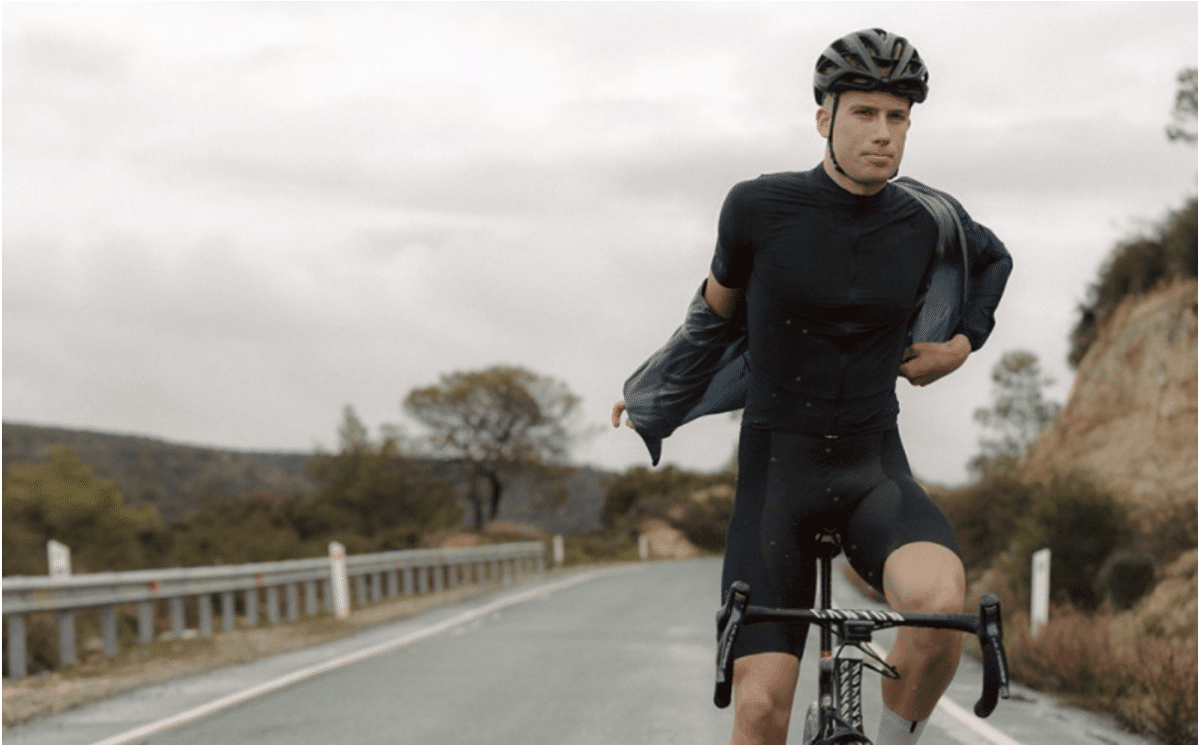
This may definitely seem like a skill that you probably didn’t know you needed but it is actually a really cool skill that can be very useful in certain situations. This skill is definitely a little harder than the rest because you will have to take both of your hands off of the handlebars in order to do this. In order to get the hang of taking your hands off of the handlebars it would be a good idea to practise getting comfortable with doing this on a quite piece of road first. While you have your hands off of your handlebars it is a good idea to try and keep pedalling because the momentum you get from it actually helps keep your wheel straight, which makes it easier to balance.
Once you’ve mastered cycling with no hands on the handlebars you can move to the next step and try to take your coat out whilst keeping your eyes and concentration on the road ahead of you. Then when you have the coat out all you’ll have to do is slip one arm into it at a time, so that one arm is free to grab the handlebars if anything were to happen, and then zip it up and you’re done.
This skill will definitely be good to know in places with extreme environments where the temperature or weather changes often. This skill will help you be prepared for these changes and make sure you can be comfortable in all of the different conditions.
Final thoughts
When you have found the time to master all of these skills it will not only make you more confident on your bike and make you more comfortable it will actually also make your bike rides a lot more safe as you will be more aware of your surroundings and will give you more control over the bike itself.

